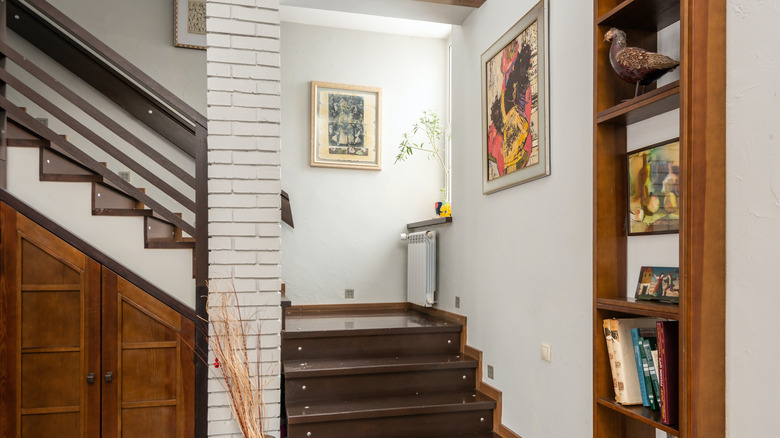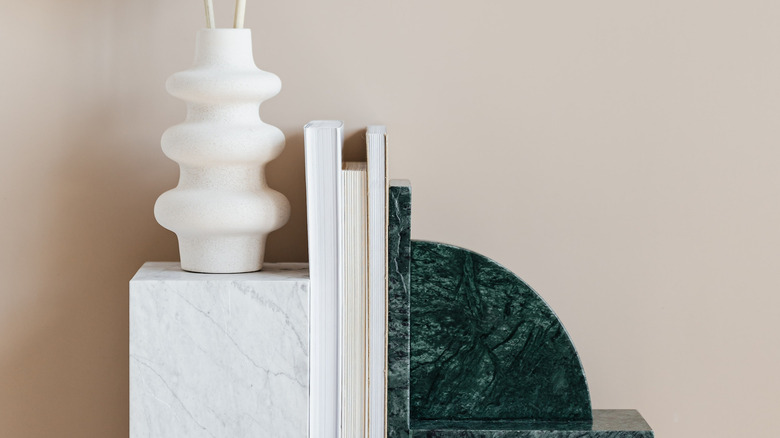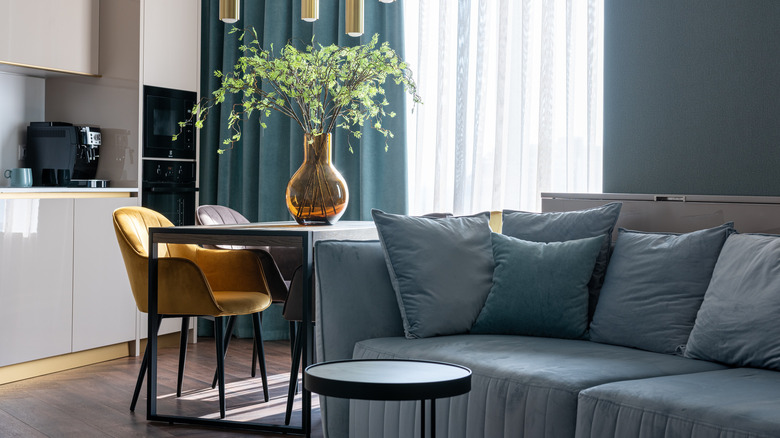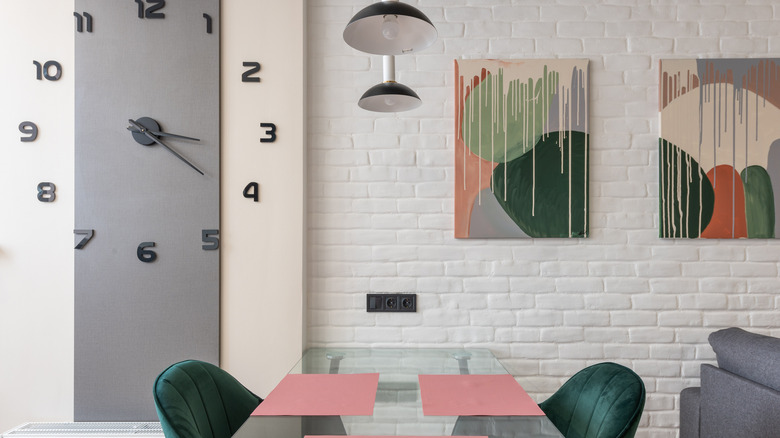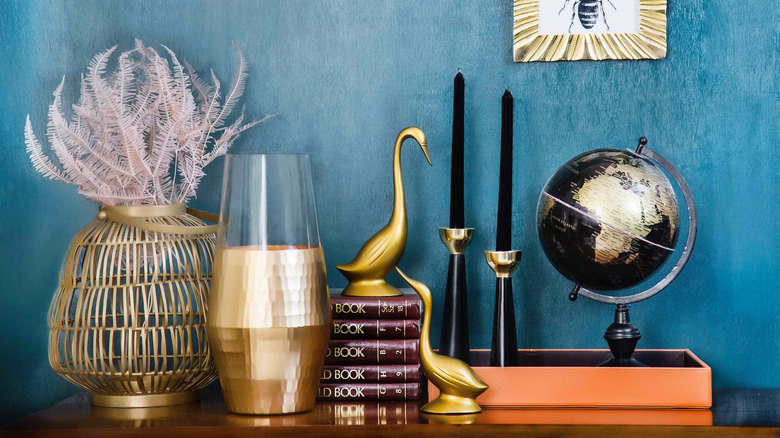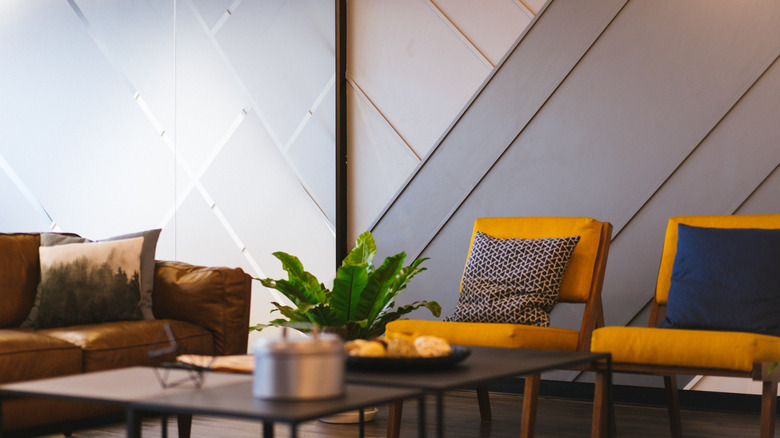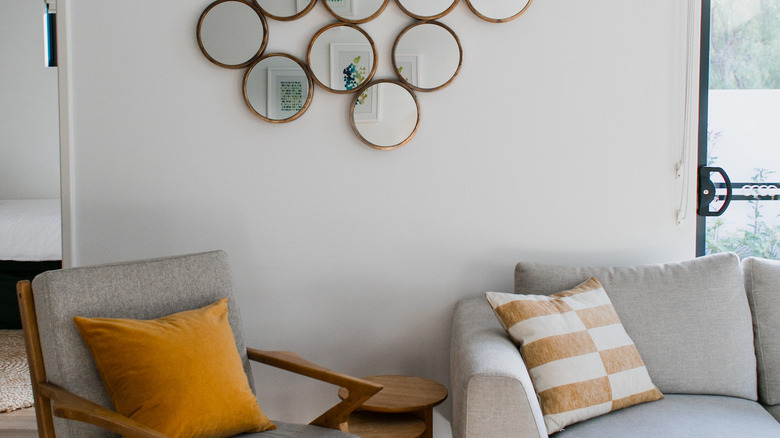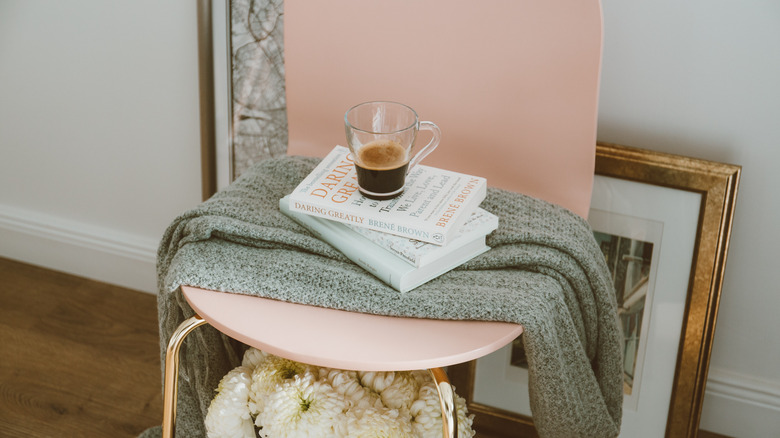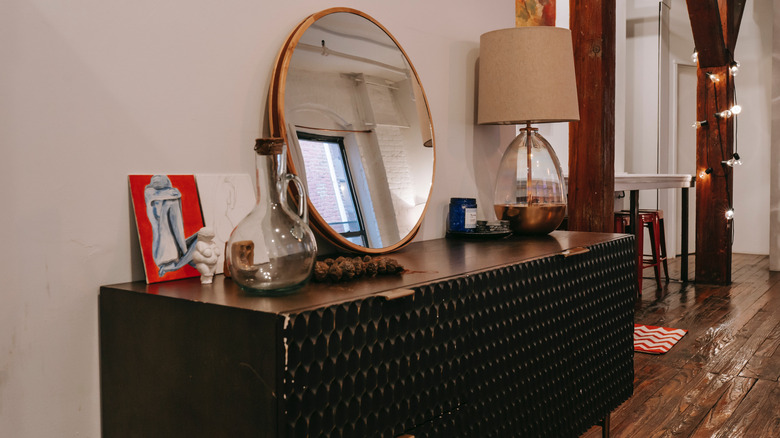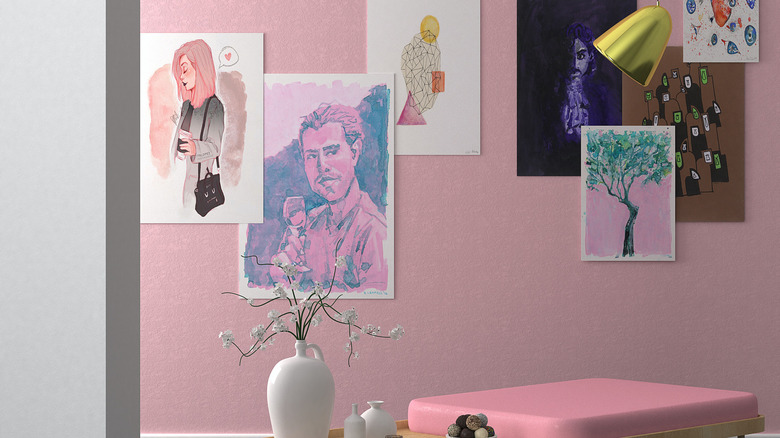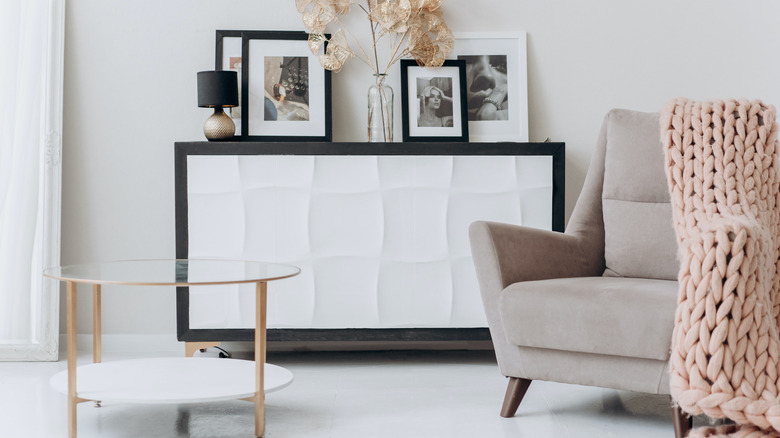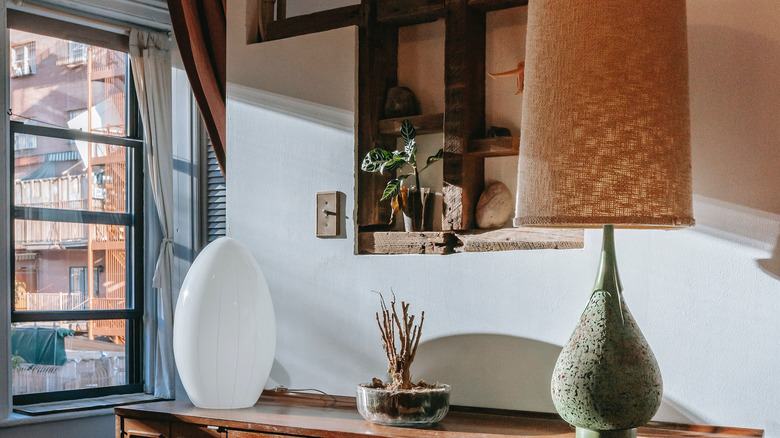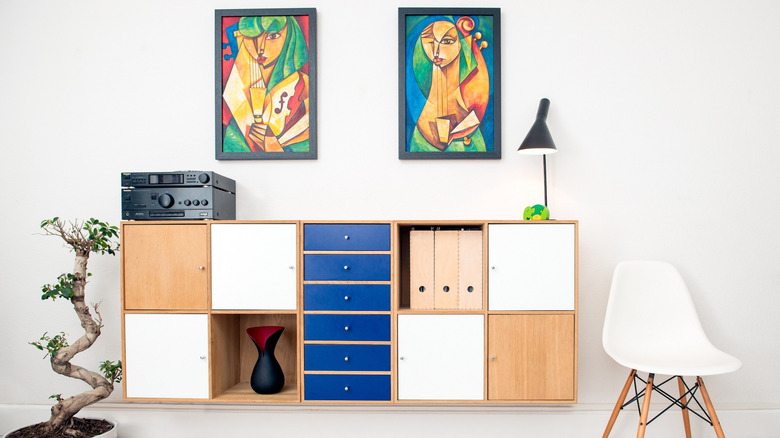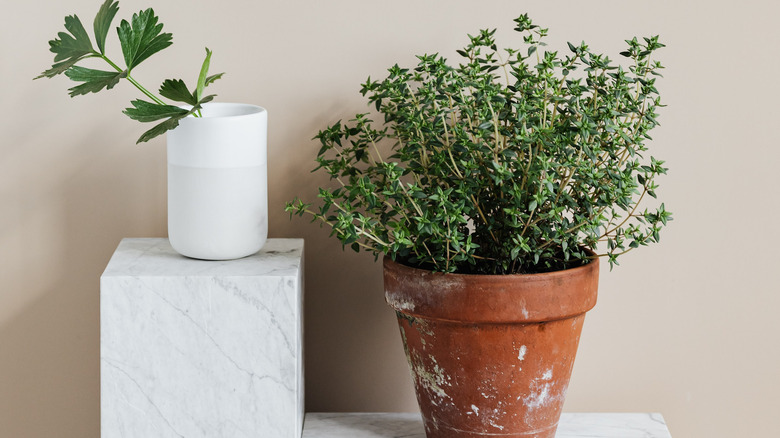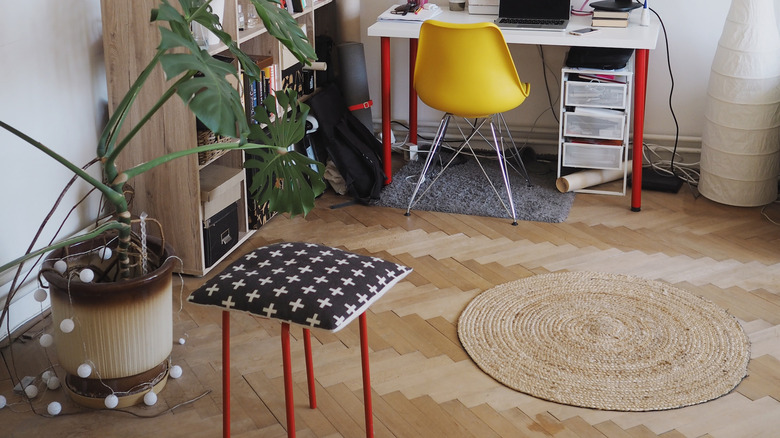The Ultimate Guide To Post-Modern Decor
Postmodern style was a popular interior design scheme that reached its peak between the years of the 1970s through the 1990s. The core idea of this design movement was to break free from mid-century modernism in the household. This style preference celebrates everything vibrant, bold, and aesthetically complex. It is the complete opposite of its predecessor's influence and embraces the unconventional forms of design elements. The revival of this style in today's homes is comprised of much more subdued hues because it is better integrated.
People today want comfortable spaces as most are finding themselves spending more time inside their cozy abodes, according to Posh Pennies. To create the perfect PoMo scheme, as it is also known as, in your home you want to explore a range of materials, add moments of color, and aim to transform the ordinary. One of the best things about this style is its flexibility. You can incorporate postmodern elements into a minimal interior, or go full maximalist with it, and it blends with other design styles as well.
Choose form over function
Most postmodern decor pieces often prioritize form over function. This era of design style did not really care about respecting the norms of forms or the functionality of the piece, focusing more on expressionism. Designers and lovers of postmodern decor should try to find items that express who they are or what they are interested in. Designs of this time were expressive, artistic, unique, uncommon, and impractical. Postmodern decor is represented by less-rigid and less-restrictive items. It features a diverse mix of historical elements, craft revival, comfortable furniture, and artistic touches.
Diversity is a key concept in postmodern deco,r proving that there is beauty in contradiction. The goal is to maximize color and use a range of materials, including wood, plastic, metal, marble, glass, and concrete. There are no set rules in postmodern decorating, and this style gives you leeway to dress up your space just the way you like it, according to 212Concept. If you see a uniquely-shaped vase, decorative jug, mirrored bowl, or wallpapered dresser that you absolutely love, go ahead and add it to your space. It doesn't have to "match" as much as it has to have meaning to you.
Select irregular shapes for furniture
Postmodern furniture pieces are often characterized by irregular forms, shapes, colors, and unique designs. These pieces did not derive out of the regular art principles found in most design elements. This movement of furniture was heavily inspired by pop culture while also meeting people's needs, desires, and tastes. Much as the postmodern art movement was opposed to the modern art movement, furniture followed suit, opposing all previous movements, according to Moderno House.
To complete the look in your space, consider adding an oddly-shaped or vibrantly-colored coffee table that pops against a neutral color palette. An alternative to adding a coffee table would be adding accent chairs with a unique configuration. This bold difference that is created in the same space is exactly the shock-and-awe effect you want to create in order to execute the ultimate postmodern decor look. In this style preference, all shapes and forms from all times are compatible with one another, and uncommon forms and colors are a highlight.
Memphis moments
To complete the ultimate postmodern look in your space, you want to include playful pieces that break from the everyday. One could try to include Memphis-inspired moments that were popular in pop culture, such as the twisted and squiggly lines that inspired most patterns of that style, according to Curbed). These elements can be effortlessly added to your space in all kinds of thoughtful ways. You could add large forms on the wall or layer fabrics on the sofa. If you are in need of an accent wall, try sourcing the perfect wallpaper pattern full of intense hues to introduce to the area.
The idea is to invoke a space full of "whimsical, fun, and bright" pieces that are meant to be disruptive, according to Courtnay Tartt Elias of Creative Tonic Design (via House Beautiful). Memphis design can introduce a ton of character into a space and can give you the opportunity to add some really unique visual moments in your room. Any piece of furniture or artwork, print, or interesting shape can make the place a little less serious.
Add outrageous elements
The 1980s was a vivacious period that simply did not "apologize for bold design," according to Katie Cobler via SFGate. Items from this time period are growing in interest among today's decorators. Compared to prices of mid-century pieces, decor items of the postmodern era may seem like a steal nowadays. These unique pieces are boasting a remarkable return as of late – items like a pair of Ettore Sottsass candlesticks have fetched over a thousand dollars.
Creating moments of "wow" are necessary in postmodern decoration, as these elements will be what bring the rest of the items in the room to life and will pique the interest of you and your guests. If you cannot source vintage finds or find contemporary remakes, then consider adding an out-of-the-ordinary element. Asymmetry is a pillar of this design movement, since it has the ability to capture attention and captivate audiences (via Invaluable). For a dramatic visual interest in your space, consider oddly-shaped lamp bases, vases, or dimensional animal statues.
Saturated colors in muted shades
While the bold shapes and vibrant colors were a big part of postmodernism in the 1970s, today's designers are straying from the norm a little bit. To incorporate postmodern decor in a contemporary way into your home, continue adding those bold shades but in muted color palettes for a softer, more balanced feel, according to Wood Grain. To be successful in adding visual interest to your space using color, you may want to consider incorporating shades that were popular in art deco interiors. These colors could include mustard yellow, avocado green, burnt orange, and metallic shades (via New Home Source).
When you create one space for these contrasting blends of color to mix collectively, it manifests the eclectic environment you are recreating in modern times. The ability to create cohesion amongst the strong yet toned-down colors and geometric patterns in the space is what will lead to an ultimate postmodern decor scheme.
Attention-grabbing geometric decor
An infallible way to increase the postmodernism look in your space is by adding striking geometric decor elements throughout the area. When choosing rugs, upholstered chairs, or pillows, you want to pay close attention to the patterns you choose. For a coherent look, try to combine simple geometric shapes with flat colors in bold, contrasting patterns. Choosing items with abstract squiggles or black-and-white stripes would be ideal for creating a post-modern look in your home, according to Creative Bloq.
No surfaces are off-limits when it comes to decorating in this style, so one should not shy from adding vivid ornamentation to the walls, floors, and curtains. The circular mirror arrangement pictured above is an ideal example of how to add decor that has that playful, geometric visual element you're going for. If you opt for a bold look in fabric, any type of pattern on your curtains will infuse your space with color and add a touch of personality (via Apartment Therapy).
Transform the ordinary
When decorating your space in today's postmodern decor scheme, you'll want to try and incorporate color and pattern into ordinary, everyday objects to make them more intriguing and exciting, according to Houzz. You could strive to alter the ordinary into something magnificent by turning a cheap, everyday item into something that looks expensive. A popular postmodern decorative element in today's homes is the addition of fluted designs, which are common on items such as end tables, ottomans, and kitchen islands (via Style by Emily Henderson)
If you have wood beams across a vaulted ceiling in your space, or if your home has exposed columns, consider adding pops of color to these structural elements for an intriguing aesthetic. If no permanent fixtures can be altered, try adding multi-useful yet colorful furniture. Adding these unique pieces to a space helps introduce interesting ways for the items to stand out in texture, color, or shape. To achieve a successful postmodern look in your home, you want to have more moderation in your playful elements, but impose contrast in the everyday pieces.
Contradict structural shapes
It was common for postmodern forms to contradict the design movements that came before them. Furniture pieces during the height of postmodernism were often crafted with borrowed inspiration from a wide range of cultures and design elements, which resulted in a look that was never seen before, according to Invaluable. For a postmodern look today, consider adding a contemporary circular mirror above a vintage upcycled dresser that has been newly painted. This contrast that is so brazenly created in the furniture forms of the space is what speaks to the opposition of the modern aesthetics that postmodern decor aims for.
Not everything is paired or comes as a set, and this works to your advantage in a postmodern interior. Anything too "matchy" just won't work here. This style does not conform, and defies all boundaries. Adding pieces that are comprised of unique forms and odd characteristics is not meant for a "timeless" look, but to convey a space that is playful and colorful (via My Modern Met).
React against modernism with striking art pieces
When choosing art for the wall space in your home, you want to focus on selecting pieces that have characteristics of refusal toward any single style – an approach toward art that was popular in postmodernism. You should try to source pieces that use earlier styles and conventions in an eclectic mixing of different mediums, as per MoMA. You can hang framed abstract art above the couch and choose to display a black-and-white framed photograph on the same wall. To create an everlasting look, combine postmodern wall art with contemporary pieces so as not to overwhelm the space with too many similarly-styled elements.
Postmodern art is considered to be a branch of contemporary art, and is one of the most controversial art movements, according to Moderno House. A basis for this art style is the idea of plurality, which fundamentally states that all knowledge and perception is essentially relative (via The Collector). This design scheme constantly challenges the norm while embracing beauty.
Add glass elements
No design look would be complete without its accent items, and the same rule applies to postmodern decorating. When choosing accents for your space, you want to have variety in both form and in the materials used to create those forms. To create a postmodern look, one should try to pair an unusual find with some variations of items in differing compositions — imagine a coffee table with a glass top and solid base, or colorful free-formed glass vases on a blocky sofa table or entryway table.
Decorations of postmodern aesthetics are identified by their bold characteristics of movement. Glass material specifically was a popular choice in most homes of the era, since it can be curated to form endless shapes and retrain a multitude of colors. Decorators who embrace postmodern decor frequently adorn their spaces with ceramic tiles and colored glass (via The Spruce).
Combine light sources in the room
Try to combine several light fixtures in one space to elevate your postmodern decor look. One should try to focus on the mix of light fixtures that can be used together or separately for more flexibility in the space, as per Architectural Digest. If you change your mind or choose to move a light, you'll want the space to continue to flow and not feel empty. You can consider using a traditional table lamp on one side of the sofa table and pair it with a more uniquely-shaped one on the opposing side.
Types of lights to make a statement in your space include glass globes, feathered fixtures, and dome-shaped pendants (via Iconic Lights). This parallel contrast in lamp design will highlight postmodernism in your space on a smaller scale. It will introduce incongruity and amplify dimension for a unique optical interest. These elements should make a statement on their own and together, as there is beauty in opposition.
Rebellious art
Postmodernism rejected the confined rules that art could only be made using specific materials such as paint, stone, and canvas. This period of art creation actively sought to use a range of materials including those previously mentioned, as well as junk and garbage. This breaking down of barriers paved a path for previous styles and techniques to be reinvented in a modern context.
Although crafted (and possibly reconstructed), art of this era still laid claim to classic materials and often mixed them for a complete look, according to Wall Art Prints. This appropriation and blend of styles is the type of rebellious art you want to find for your wall space. One could make their own art forms to display, or purchase one-of-a-kind pieces from an aspiring artist. The more unique and out-of-this-world the item is in form, the better the eye candy for the room.
Make space for natural elements
For this next tip, keep in mind that postmodern decor has a rule-breaking dynamic design influence, meaning that there are no boundaries. This same boundary-less concept holds true when it comes to adding greenery in your home. The options are endless for adding natural elements to your space. One could opt to use faux plants or introduce real greens into your home, but be sure to factor in maintenance prior to purchase.
Consider indoor herbs and vegetables as some plants to begin to harvest, as these are commonly used ingredients and generally easy to grow and care for. Joyce Mast, Bloomscape's Plant Mom, told Good Housekeeping that people are spending more time indoors, meaning ”edible plants will continue to grow in popularity." This blend of usefulness mixed with decoration perfectly exemplifies a successful postmodern decor scheme. Natural items that are attractive as well as useful are the cohesion that should exist in your space.
Maximize joy in the space
More is more and less is a bore in post-modern decor. You want to introduce items into your space that amplify the depths of colors and textures in a contemporary way. "Joy is a fundamental element," especially in a maximalist design scheme, according to The Spruce. Invoke as much playfulness as you can muster in your space. Post-modern decor is a combination of busy patterns and odd shapes, and the more of these there are in an area, the better the visual texture.
A goal of a successful postmodern interior is for the eye to wander around the room, picking up on something new and interesting each time it circles. When guests are invited into your space, you want them to be intrigued by your style as it encourages conversation and sheds light on your interests. Share your joy with others through your decorations, and be sure to incorporate personal pieces in your ultimate postmodern domain.
